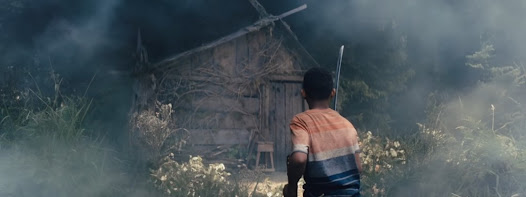 |
| Wan in white |
Sofia Coppola's The Beguiled is a lifeless remake of the 1971 Don Siegel feature. Coppola is trying to update the story and make it fit in today's woke political climate. So, out goes the female nudity, sapphism, incest, politics and most damagingly, a compelling Afro-American character. Unfortunately, the erotic charge of the original is also missing. We are left with a Southern Gothic tale shorn of Eros and Thanatos, which defeats the point.
Coppola's film is handsome, with fine production design and costumes. Close-ups and quick editing are eschewed as Coppola works well at capturing the slower pace of life in 1864. The film is largely shot with available lighting and it does give a feel for life before electricity. This overall effect, however, drain the film of vitality which Siegel's film, despite its vulgar lapses, has in spades.
Part of the problem with Coppola's film is that it soft pedals the mendacity of Colin Ferrell's wounded soldier. Siegel underlines the Big Bad Wolf nature of Eastwood's soldier by presenting flashbacks of him killing and pillaging; actions that belie his smooth. pacific tone when talking to the ladies. Farrell's soldier lacks the menace of Eastwood's. Thus, when he acts up and is smote down by the seminary ladies, the result seems more incongruous than just. A true conflict between the sexes has not been established. Farrell is well-cast and delivers the film's best performance, but his character is neutered by Coppola even before the seminary ladies get their licks in.
Comparing the actresses in both versions further tips the scales in the Siegel film's favor. Kidman is far too aerobicized and botoxed to be believable as a 19th Century headmistress. Geraldine Page, even though she was younger than Kidman in 1971, is far more believable as a love starved spinster. Not all of this is Kidman's fault. She is only given the faintest of back stories to work with, while Page's character's incestuous relationship with her brother even though it smacks of lunacy at times does provide a background for her character's barely restrained hysteria.
 |
| Jo Ann Harris tempts Clint Eastwood in Don Siegel's 1971 version of The Beguiled |
Kirsten Dunst, a good luck talisman for Coppola, is miscast as an innocent school teacher pining for romance. She gives it a good go, but does not project the tremulous Victorian chastity that Elizabeth Hartman did. Ms. Hartman excoriation of Eastwood after his infidelity is a scalding moment Coppola's film never matches. Similarly, Elle Fanning is not able to project the sensuality that Jo Ann Harris did in the original, though this is more due to Coppola's muted sensibility than Ms. Fanning's efforts. Coppola is fine with indoor prayers, salon music and lessons, but sequences out of doors, like a shot of the ladies hoeing the garden, are fumbled badly.
Coppola's direction is overly restrained, perhaps in counterpoint to Siegel's often bonkers mise en scene. Siegel's over the top direction drew critical brickbats when the film was released. Champions of the director like Andrew Sarris and Robin Wood found the film to be a disappointment. Wood compared the film to Ford's The Fugitive as an example of an auteur's pet project exposing the limitations of a director more suited to working within the confines of a genre film. Certainly Siegel is guilty of lapses in taste in The Beguiled: the shot from Eastwood's POV of Harris' derriere being a prime example.
Siegel's film sometimes smacks more of the late 1960s than the Civil War era. Harris' character seems to have drifted away from a Russ Meyer shoot and Mae Mercer's interesting turn channels Angela Davis more than an antebellum slave. But this is why Siegel's film seems more modern and rewarding than Coppola's. It has an edge to it that Coppola dulls. I admit to being prejudiced after having seen Siegel's film five or so times over the years. I think it is one of his best, along with
Invasion of the Body Snatchers,
The Line-Up,
The Killers and
Charley Varrick. Moments of crazed intensity, like Page's dream sequence (absent in the Coppola film) may have seemed overheated to the critical academy of the time, but to me today they seem like audacious attempts by Siegel to extend his artistic range. I think
The Beguiled is a better attempt to portray the feverish delirium of unconscious sexuality than, say,
Cries and Whispers. I'll certainly watch it again before I give another chance to Coppola's benumbed remake.






























